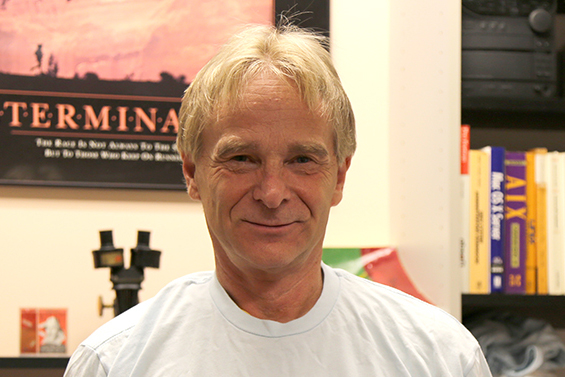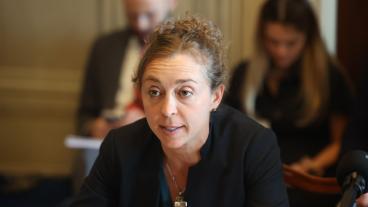GOLDEN, Colo., March 29, 2016 –A Mines chemistry professor has been awarded $1.75 million over five years by the Office of Naval Research to develop and share software that will make designing materials easier for industry researchers, by better defining variations in electronic charge density and linking them to particular mechanical properties.
Professor Mark Eberhart and his Molecular Theory Group will work with developer Tecplot to complete the software, as well as create a user interface. The software, tentatively called Bondalyzer, will then be used to investigate problems identified by two of Mines’ university-industry research centers: the Advanced Steel Processing and Products Research Center and the Center for Advanced Non-Ferrous Structural Alloys.
“Our software is the first that allows one to associate property changes with the corresponding changes in the electronic structure,” Eberhart said. “The type of problem we will be investigating is the effect of alloying elements and impurities on the structure, stability, and mobility of defects. This is a problem which is little understood but one that is recognized as having a strong chemical component.”
PhD candidates in the centers will work closely with Mines and Tecplot to make the software useful to industrial researchers. “This is a key feature of the first phase of this program,” Eberhart said. “With the close involvement of our industrial partners during the first phase of this program, we hope to build confidence in the benefits that may result from the use of our design tools.” Researchers hope this will provide the impetus for the second phase – transferring the modeling technology to industry.
In his proposal to ONR, Eberhart noted that there is an extensive vocabulary for characterizing microstructure, with these terms implying structure-property relationships. For example, dendritic microstructure is prone to brittle failure.
Except for a few poorly defined terms, said Eberhart, this doesn’t exist for molecular and solid-state charge density. “The sparseness of this vocabulary reflects the nascent state of charge density engineering, a field that will allow us, among other things, to select alloying elements that will optimize a material’s properties.”
Contact:
Mark Ramirez, Information Specialist, College of Applied Science & Engineering | 303-384-2622 | ramirez@mines.edu
Kathleen Morton, Digital Media and Communications Manager, Colorado School of Mines | 303-273-3088 | kmorton@mines.edu



